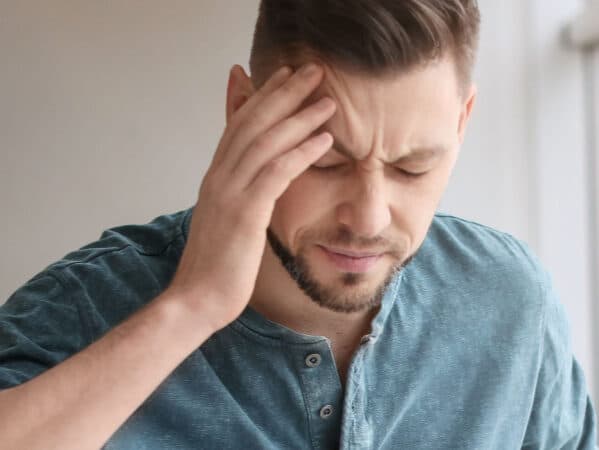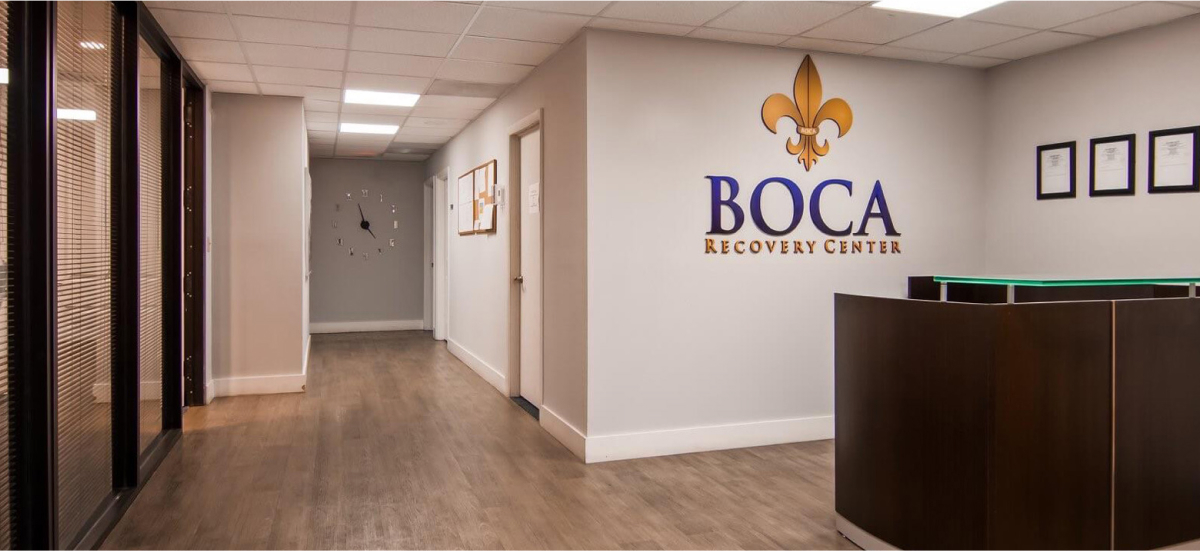What Is Klonopin?
Klonopin is a prescription benzodiazepine used to treat anxiety, panic disorders, and seizures. As a Schedule IV controlled substance, it comes with a low potential for abuse or dependence. Most benzodiazepines belong to this class.
Benzodiazepines act on a neurotransmitter in the brain called GABA-A. They enhance the effects of this neurotransmitter and produce a hypnotic sedative effect.
Klonopin comes in 0.5 mg, 1 mg, and 2 mg tablets and 0.125 mg, 0.25 mg, 0.5 mg, 1 mg, and 2 mg orally disintegrating wafers.
This medication has several legitimate medical uses. Using Klonopin is generally considered safe and effective as directed. As with most benzodiazepines, most issues arise with misuse.
Benzodiazepines are commonly involved in polydrug use, where a person uses multiple types of drugs to enhance their high or reduce negative symptoms. This practice can significantly increase overdose risks.
Key Facts About Klonopin
Alprazolam (Xanax) and clonazepam (Klonopin) are two of the most common benzodiazepines on the illicit drug market, according to DEA reports.[3]
Benzodiazepines are Schedule IV substances, meaning they have a low potential for abuse and a low risk of dependence, although the merit of this classification is debatable.[2]
Benzodiazepines are commonly involved in polydrug use, where a person uses multiple types of drugs to enhance their high or reduce negative symptoms. This practice can significantly increase overdose risks.[4]
Side Effects of Klonopin
The side effects of Klonopin can be unpleasant in the short term and dangerous in the long term. Understanding what they are and why they appear could make you think twice about abusing this drug.
Common Klonopin side effects include:
Drowsiness
Dizziness
Lack of coordination
Memory problems
Some people develop suicidal thoughts while using this medication.
Risk of Klonopin Misuse
Klonopin and other benzodiazepines are generally taken orally or crushed up and snorted. They may be taken with other drugs, especially opioids and marijuana.
Klonopin misuse is frequently associated with adolescents and young adults, although anyone could potentially abuse these drugs. According to this report, the majority of people entering treatment programs for benzodiazepine addiction are male, between the ages of 18 and 34, and white. Of them, almost 13% said benzodiazepines were their primary drug of abuse.
Snorting Klonipin
People sometimes snort Klonopin and similar benzodiazepines to intensify the drug’s effects, resulting in a stronger high. Snorting Klonopin is not the intended method of using the drug. By definition, this is drug misuse.
Snorting drugs causes them to get absorbed more quickly, which causes a sudden surge of the hypnotic-sedative effect that Klonopin has rather than the slow buildup caused by taking the drug orally (which is how it is intended to be taken).
In addition, snorting powders of any kind is associated with other side effects, such as:
Swelling of the nasal lining
Lung infections
Obstructions of the respiratory tracts and nasal airways
It’s even more dangerous to snort Klonopin if the drug is purchased pre-powdered from a black market dealer. These drugs are often cut with other substances, including powdered laundry detergent, caffeine, and laxatives, which can cause further damage.
Street Names for Klonopin
Klonopin is a type of benzodiazepine. The common street name for this type of drug is simply benzos, which is an umbrella term that does not indicate the actual type of benzodiazepine.
While drugs like Ativan and Librium have nicknames that are the same as benzodiazepines in general, Klonopin is a more popular drug that has been given many of its own nicknames.
Klonopin has the following street names:
K & K-pin
Super Valium
Pin
Sleepers
Chill pills
Planks
Users and dealers might also call Klonopin roofies, although the term getting roofied generally means being dosed with Rohypnol (flunitrazepam) without one’s knowledge.
Causes and Risk Factors for Klonopin Addiction
Anyone who uses or abuses Klonopin can develop an addiction to the drug, but common risk factors can increase the chances of problematic drug use. These are a few of the known factors:
Biological Factors
Your genes can influence how quickly Klonopin enters your body and makes you feel high. The faster the drug works and the quicker it wears off, the more reinforcing the drug becomes. Your risk could elevate as a result.
Environmental Factors
Many people sustain a Klonopin addiction with the help of family members and friends. Knowing people with active prescriptions means you can get the drug as often as you’d like to. Access can increase how often you use the drug.
Social Factors
Growing up in a household with drug abuse can increase your risks. Spending time in social situations where drug use is common can also normalize the behavior.
Psychological Factors
People with a history of substance abuse can become attached to Klonopin quicker than those without this history. A history of anxiety disorders can also mean you get the drug legally from your doctor, spurring the urge to abuse it.


Xanax vs. Klonopin: What Are the Differences?
Signs and Symptoms of Klonopin Addiction
A Klonopin addiction can have physical, cognitive, and behavioral effects. Here are the symptoms to look out for:
| Physical | Cognitive | Behavioral |
|---|---|---|
| Slurred speech | Memory trouble | Engaging in drug-seeking behaviors |
| Respiratory issues | Slowed reaction times | Doctor shopping |
| Physical dependence | Confusion | Suicidal thoughts |
| Blurred vision | Slowed mental processing | Poor performance at work or school |
| Weakness or lethargy | Inability to problem solve | Decreased interest in activities that don’t involve drugs |
Poly-Drug Use: Combining Klonopin With Other Substances
While some people abuse Klonopin alone, most people combine the drug with other substances, which is incredibly dangerous. These are a few of the drugs people combine with Klonopin:
Klonopin and Marijuana
Combining Klonopin and marijuana causes drowsiness and a lack of coordination. This can lead to intense sedation and poor decision-making abilities.
Klonopin and Alcohol
Both Klonoipin and alcohol are central nervous system depressants and can have synergistic effects when taken together. Combining them can lead to brain cell damage and death. It can cause your breathing to weaken to such a point that it becomes life-threatening.
There is also a serious overdose risk when mixing Klonopin and alcohol. If the overdose is not quickly addressed, this has the potential to eventually result in death.
Individuals may start mixing Klonopin and alcohol after being prescribed the drug to help with alcohol withdrawal. This doesn’t mean Klonopin can’t help with alcohol withdrawal symptoms or potentially be an important part of addiction recovery.
However, it does mean doctors and patients need to practice caution when considering the benefits and drawbacks of using benzodiazepines like Klonopin in the recovery process.
Klonopin and Opioids
Both prescription medications can cause intense sedation and overdose. Combining them augments the risks.
Klonopin Withdrawal: Understanding the Dangers
If you have misused Klonopin for a while, do not stop taking it suddenly. Doing so could trigger severe withdrawal symptoms that could even be life-threatening. Talk to a doctor or addiction treatment professional about how to safely taper your use of these drugs.
Severe Klonopin withdrawal can lead to the following symptoms:
Anxiety
Depression
Hypersensitivity
Depersonalization
Nausea and vomiting
Sleep disturbances
Visual, tactile, or auditory hallucinations
Physical tremors
Seizures
Treatment Options for Klonopin Addiction
If you think you might have a Klonopin addiction, talk to an addiction treatment professional about the best way to start your recovery. These methods could be useful:
Supervised Taper: Coming Off Klonopin Safely
Quitting Klonopin abruptly can be life-threatening. A taper is different. Your doctor will determine a schedule that allows you to take a little less of the drug over time. This way, your brain cells have time to adjust to sobriety. Your risk of life-threatening complications (like seizures) is significantly reduced with this method.
Your doctor may first switch you to a long-acting benzodiazepine before they initiate the tapering schedule.
Medical Detox
While some people can work with their doctors on a supervised taper at home, others can’t. If you’re worried about relapse risks, entering a medical detox program can help.
With medical detox, you’ll be surrounded by caring staff, away from temptation, while you move through the tapering process. Since detoxing from benzos can be life-threatening, it pays to take withdrawal seriously.
Rehabilitation
You’ll be sober at the end of detox, but you may not have robust relapse prevention skills. Develop them in rehabilitation programs.
Choose an inpatient rehab program and stay away from home-based triggers. Or, you may benefit from an outpatient rehab that allows you to live at home while you work on your addiction. There are benefits to both forms of rehab, so talk to your treatment team about which option is right for you.
Aftercare
When your rehab program is complete, aftercare can help you stay sober. Attend support group meetings and learn from peers in recovery. Or keep routine appointments with your counselor to find new ways to deal with relapse challenges.
Find Help for a Klonopin Addiction
If you’re struggling with an addiction to Klonopin or know someone who is, you’re not alone. A professional treatment center can help you overcome this challenge and reclaim your quality of life.
Frequently Asked Questions About Klonopin Addiction & Abuse
We’ve compiled some of the most frequently asked questions about Klonopin.
Yes. The U.S. Food and Drug Administration says you can overdose on Klonopin. Klonopin, especially when mixed with other drugs, can cause slow breathing. The person may not draw in enough air to give brain cells oxygen. If this occurs, the person could die or have brain damage.
Lethal overdoses are commonly associated with mixing Klonopin with other benzodiazepines or opioids.
If a person is unresponsive, very confused, falling in and out of consciousness, has clammy skin, bluing of their lips and fingertips, or otherwise is showing worrying symptoms, treat it as a medical emergency. Call 911 and stay with the person until help arrives.
Yes. Klonopin and all benzodiazepines are central nervous system depressants. They increase sleepiness and are sometimes used to treat insomnia.
Klonopin is a long-lasting benzodiazepine that can stay in your system for days.
Yes, Klonopin can cause weight gain. This is due to the adverse effects that the drug can have on your metabolism and energy levels.
Ask your doctor. People with seizure disorders may use the medication every day. But if you don’t have a seizure disorder, the drug may not be safe for daily use.
- Prescription CNS depressants drug facts. National Institute on Drug Abuse. Published March 2018. Accessed June 30, 2023.
- Drug scheduling. United States Drug Enforcement Administration. Accessed June 30, 2023.
- Benzodiazepines. U.S. Drug Enforcement Administration. Published April 2020. Accessed June 30, 2023.
- Benzodiazepines and opioids. National Institute on Drug Abuse. Published November 7, 2022. Accessed June 30, 2023.
- Klonopin prescribing information. U.S. Food and Drug Administration. Published October 2013. Accessed June 30, 2023.
- Schmitz A. Benzodiazepine use, misuse, and abuse: A review. Ment Health Clin. 2016;6(3):120-126. Published 2016 May 6.
- Substance abuse treatment admissions for abuse of benzodiazepines. Treatment Episode Data Set. Published June 2, 2011. Accessed June 30, 2023.











